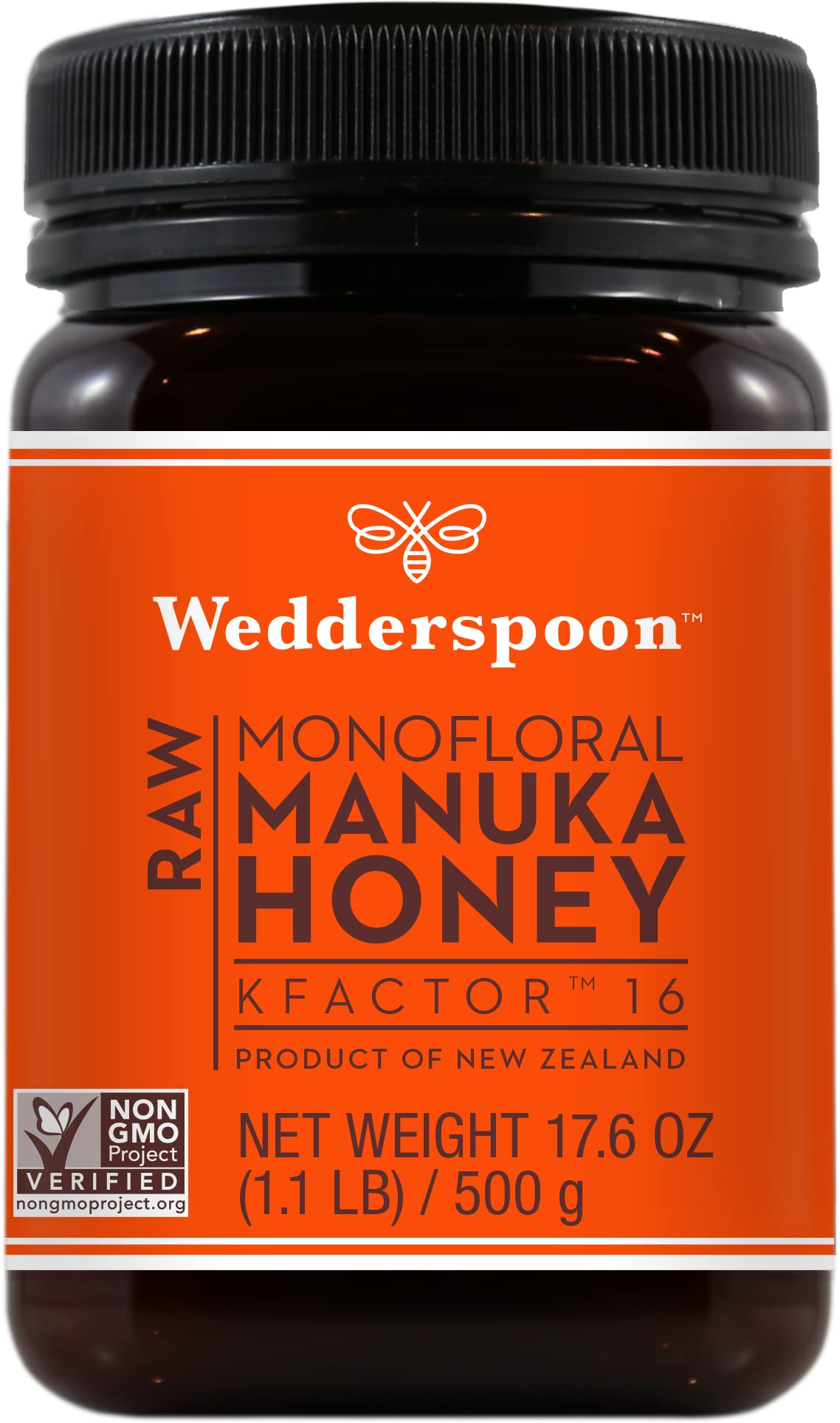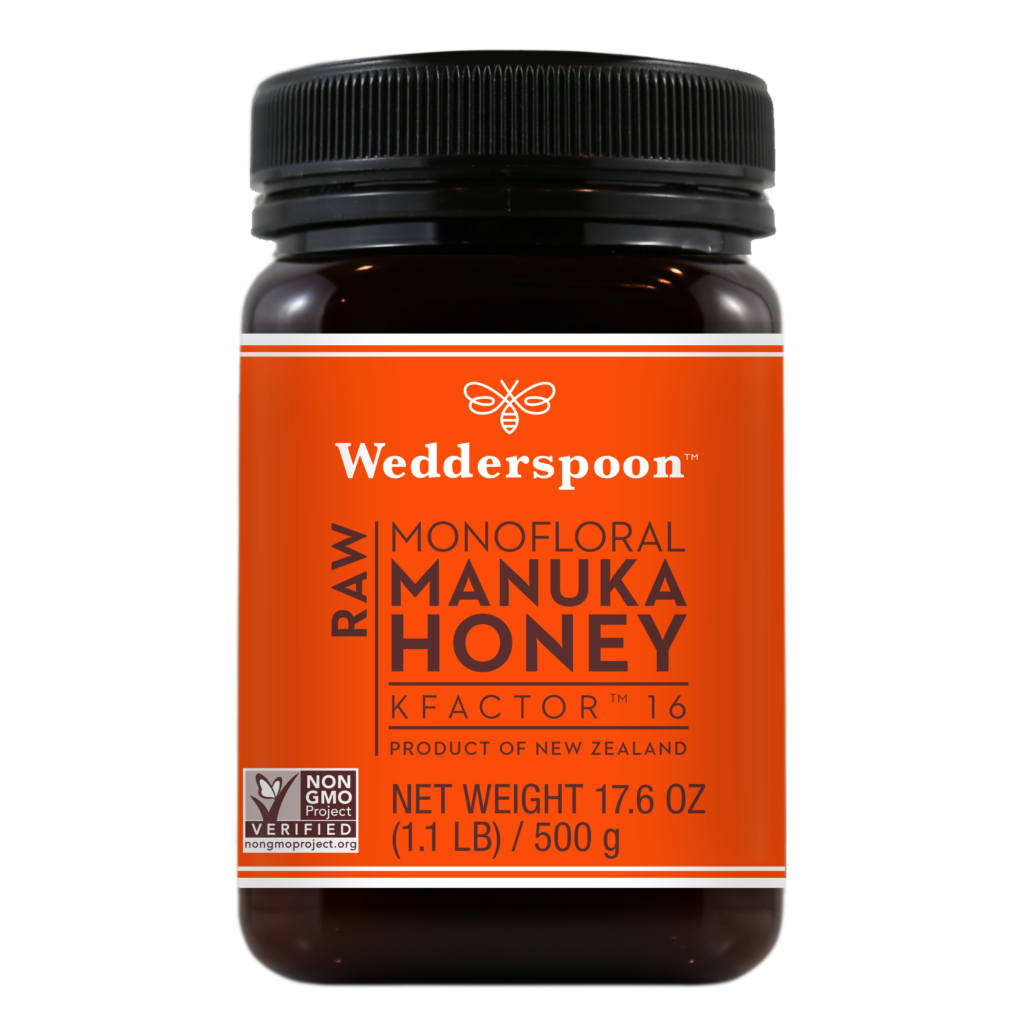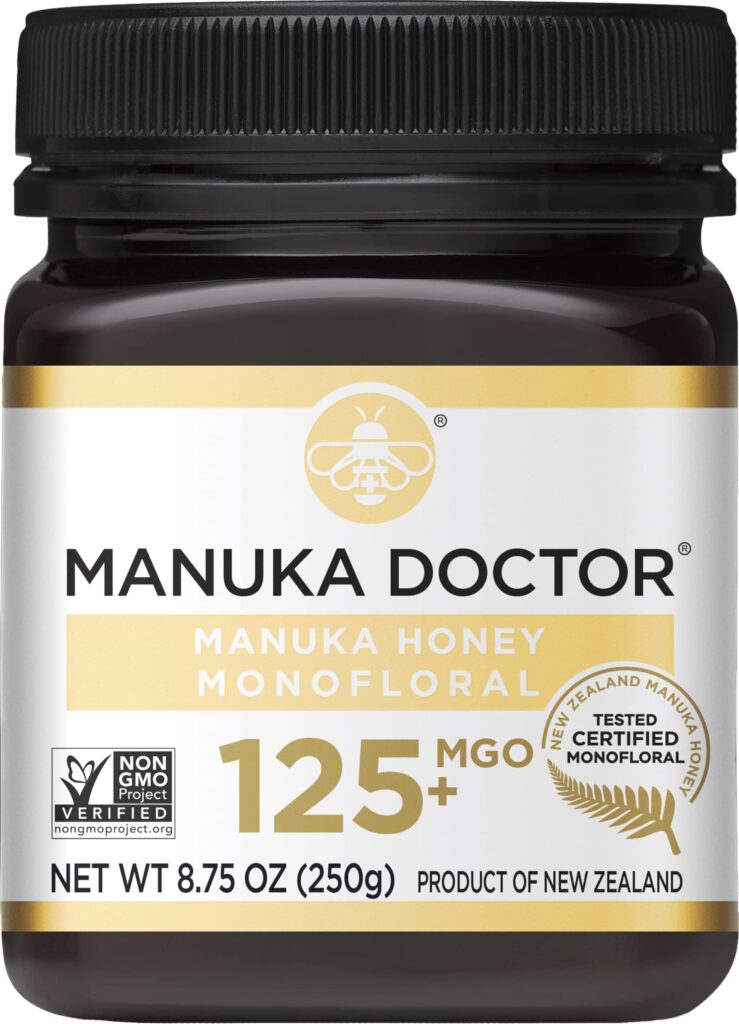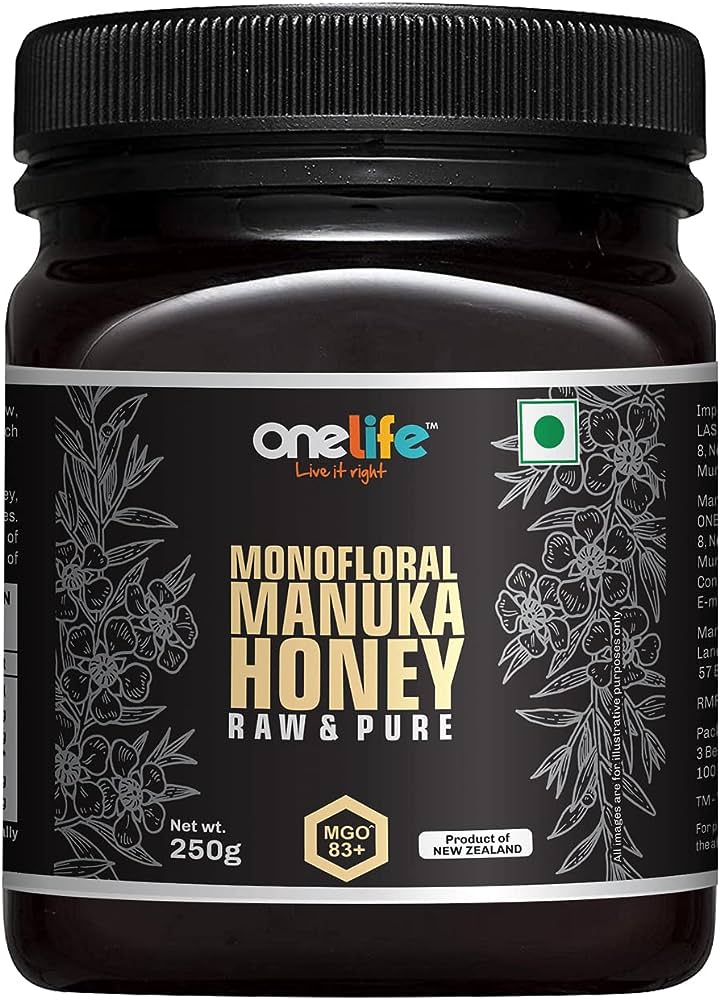
You are about to discover the wonderful world of monofloral manuka honey. This exquisite honey is renowned for its unique flavor and therapeutic properties. In this article, we will unveil the secrets behind monofloral manuka honey, explore its origins, and highlight its incredible health benefits. Get ready to indulge in the fascinating world of this golden nectar and uncover why it has taken the culinary and wellness industries by storm.
What is Monofloral Manuka Honey?
Monofloral manuka honey is a special type of honey that is derived from the nectar of the manuka tree (Leptospermum scoparium), which is native to New Zealand and parts of Australia. What makes monofloral manuka honey unique is that it predominantly contains nectar from the manuka flower, giving it distinct characteristics and a wide array of health benefits.
Definition
Monofloral manuka honey is defined as honey that contains at least 70% of pollen from the manuka flower. This high concentration of manuka pollen sets it apart from multifloral honey, which is derived from a variety of flower sources. The specific characteristics and properties of manuka honey are attributed to the unique composition of the nectar collected by bees from the manuka flower.
How is it Produced
To produce monofloral manuka honey, beekeepers place their hives in areas where manuka trees are abundant during the blooming season. The bees collect nectar from the manuka flowers and bring it back to the hive. Inside the hive, the bees process the nectar by diluting it with enzymes and storing it in honeycomb cells. Through the process of evaporation, the water content of the nectar diminishes, resulting in the formation of honey. Once the honey is ready, beekeepers carefully extract it from the honeycomb cells using specialized techniques, ensuring the highest quality and purity of the monofloral manuka honey.
The Unique Properties of Manuka Honey
Manuka honey is renowned for its unique properties that distinguish it from other types of honey. The presence of methylglyoxal (MGO), a naturally occurring compound, is one of the key factors that give manuka honey its distinct characteristics. MGO is believed to be responsible for the honey’s high antibacterial potency and is often used as a measure of its quality and efficacy.
Additionally, manuka honey contains a variety of beneficial compounds, such as hydrogen peroxide, which provides its natural antibacterial properties. It also contains antioxidants, vitamins, minerals, and enzymes that contribute to its overall health benefits. These properties make monofloral manuka honey highly sought after for its therapeutic and medicinal properties.
Manuka Honey Classification
Monofloral vs Multifloral
When it comes to manuka honey, there are two classifications: monofloral and multifloral. Monofloral honey is derived predominantly from the nectar of a single flower source, in this case, the manuka flower. On the other hand, multifloral honey is a blend of nectar from different flower sources, including manuka.
Monofloral manuka honey is highly valued due to its consistency and potency, as the high concentration of manuka pollen ensures a more uniform flavor profile and medicinal properties. Multifloral honey, while still beneficial, may have a more varied spectrum of flavors and health benefits due to the mixture of different pollens.
Criteria for Monofloral Classification
To be categorized as monofloral manuka honey, it must meet specific criteria set by regulatory bodies. It typically undergoes laboratory testing to determine the pollen content and confirm that it contains at least 70% of pollen from the manuka flower. This rigorous testing ensures that consumers can differentiate between true monofloral manuka honey and honey that merely incorporates a small amount of manuka pollen.
Manuka Honey Grading
UMF vs MGO
When purchasing monofloral manuka honey, you may come across terms such as UMF (Unique Manuka Factor) and MGO (Methylglyoxal) grading. These grading systems help consumers differentiate between different levels of quality and potency in manuka honey.
UMF is a rating system that measures the key markers, including the concentration of MGO, leptosperin, and dihydroxyacetone (DHA). A higher UMF rating indicates a higher concentration of these compounds, and consequently, a more potent and premium quality manuka honey.
MGO, on the other hand, measures the concentration of Methylglyoxal in the honey. The higher the MGO level, the higher the antibacterial properties and potential health benefits of the honey. While both grading systems provide valuable information, UMF is generally considered more comprehensive, taking into account multiple factors that contribute to the quality of the honey.
What to Look for in a Quality Monofloral Manuka Honey
When choosing a monofloral manuka honey, it is important to check for a reputable brand that provides transparent information about the UMF or MGO rating of the honey. Look for a UMF rating of 10 or higher, or an MGO rating of at least 400, to ensure that you are purchasing a premium quality monofloral manuka honey. Additionally, consider the source and region of production, as honey derived from specific regions in New Zealand, such as the East Cape or Northland, is known to have particularly potent properties.
Health Benefits of Monofloral Manuka Honey
Healing Properties
Monofloral manuka honey has long been recognized for its impressive healing properties. Its high antibacterial and anti-inflammatory effects make it an effective natural remedy for treating wounds, cuts, burns, and infections. The honey creates a protective barrier on the skin, promoting faster healing and reducing the risk of infection.
Antibacterial and Antioxidant Effects
The potent antibacterial properties of monofloral manuka honey can help fight against harmful bacteria, including antibiotic-resistant strains such as Methicillin-resistant Staphylococcus aureus (MRSA). Its antioxidant effects, attributed to the presence of various bioactive compounds, aid in neutralizing free radicals and reducing oxidative stress, which contributes to overall health and well-being.
Digestive Health
Consuming monofloral manuka honey can have beneficial effects on digestive health. It can help soothe gastrointestinal issues, such as acid reflux, gastritis, and stomach ulcers. Manuka honey’s antibacterial properties are believed to inhibit the growth of Helicobacter pylori, a bacterium commonly associated with stomach ulcers and gastritis. It also promotes the growth of beneficial gut bacteria, contributing to a healthy digestive system.
Skin Care
Monofloral manuka honey can be a valuable addition to your skincare routine. Its antibacterial properties help combat acne-causing bacteria, while its moisturizing and healing properties can improve the overall complexion of the skin. It’s also known to reduce inflammation and redness, making it beneficial for those with sensitive or irritated skin. Incorporating manuka honey into face masks, cleansers, and moisturizers can help rejuvenate and nourish the skin.

Uses of Monofloral Manuka Honey
Culinary Applications
Monofloral manuka honey has a unique flavor profile with notes of rich caramel and herbal undertones. It is a versatile ingredient in culinary applications and can be used as a natural sweetener in beverages, baked goods, dressings, marinades, and sauces. Its distinct flavor adds depth and complexity to a range of dishes, enhancing both savory and sweet flavors.
Medicinal Uses
As mentioned earlier, monofloral manuka honey possesses numerous medicinal properties. It can be consumed orally to alleviate symptoms of sore throat, coughs, and colds. You can mix it with warm water or herbal tea to soothe discomfort and provide relief. Manuka honey’s antibacterial effects are also beneficial for oral health, promoting gum health and preventing tooth decay and plaque formation.
Beauty and Skincare Products
The numerous skincare benefits of monofloral manuka honey have led to its incorporation into various beauty and skincare products. From facial cleansers to masks, creams, and serums, manuka honey helps moisturize, nourish, and protect the skin. Its antimicrobial properties make it effective against acne, while its antioxidant effects help combat skin aging and promote a youthful complexion.
How to Identify Genuine Monofloral Manuka Honey
Certification and Testing
To ensure you are purchasing genuine monofloral manuka honey, look for certifications from recognized regulatory bodies. The Unique Manuka Factor Honey Association (UMFHA) in New Zealand provides a certification program that guarantees the authenticity and quality of manuka honey. Additionally, reputable brands will often conduct independent lab testing to verify the UMF or MGO content, ensuring the honey meets the required standards.
Labelling and Packaging
Pay attention to the labeling and packaging of the honey. Genuine monofloral manuka honey should clearly indicate the UMF or MGO rating, as well as the percentage of manuka pollen content. Look for a batch number and the name of the producer to facilitate traceability and transparency.
Reputable Brands
Choose your monofloral manuka honey from reputable brands that are known for their commitment to quality and ethical production. Look for brands with a long-standing presence in the industry and positive customer reviews. Reputable brands will often follow sustainable and ethical practices in sourcing and production, ensuring the protection of bees and the environment.

Potential Side Effects and Precautions
Allergies and Sensitivities
While rare, some individuals may be allergic or sensitive to honey. If you have a known allergy to bees or pollen, exercise caution when consuming or using monofloral manuka honey. It’s always best to perform a skin patch test before applying honey topically or consult with a healthcare professional if you have any concerns.
Excessive Consumption
As with any food or supplement, moderation is key. Although monofloral manuka honey offers numerous health benefits, excessive consumption can lead to increased calorie intake and potential weight gain. It is recommended to consume honey in moderation as part of a balanced diet.
Impact on Diabetic Individuals
Individuals with diabetes should exercise caution when consuming honey, including monofloral manuka honey. Honey has a high sugar content, which can cause a rapid increase in blood sugar levels. It is recommended to consult with a healthcare professional to determine the appropriate amount of honey that can be safely incorporated into a diabetic diet.
Interactions with Medications
If you are taking any medications or have any underlying health conditions, it is crucial to consult with a healthcare professional before consuming monofloral manuka honey. Certain medications, such as blood thinners, may interact with honey, potentially affecting their efficacy.
The Importance of Sustainable Manuka Honey Production
Protecting the Bees
Sustainable manuka honey production involves implementing practices that prioritize the health and well-being of honeybees. Honeybees play a vital role in pollination, maintaining biodiversity, and ensuring the reproduction of many plant species. By protecting the bees and their habitats, sustainable production methods contribute to the overall health of ecosystems.
Conserving the Environment
Sustainable manuka honey production also recognizes the importance of preserving and conserving the natural environment. It emphasizes responsible land management, reducing chemical exposure, and minimizing the environmental impact of honey production. By adopting environmentally friendly practices, the industry ensures the long-term sustainability of manuka honey production.
Ethical Practices in Harvesting
Ethical harvesting practices involve treating the bees with care and respect throughout the honey production process. This includes providing healthy bee environments, minimizing stress during honey extraction, and ensuring the bees’ welfare is prioritized. Sustainable beekeeping practices contribute to the ethical and humane treatment of bees.

The Future of Monofloral Manuka Honey
Increasing Demand and Limited Supply
In recent years, the demand for monofloral manuka honey has surged, driven by its growing reputation as a natural health remedy. However, the supply of genuine monofloral manuka honey is limited due to the specific conditions required for manuka tree growth and the diligent testing and certification processes. As a result, the price of monofloral manuka honey may increase as demand continues to rise.
Sustainable Farming Practices
To ensure the long-term availability of monofloral manuka honey, sustainable farming practices are crucial. These practices involve responsible land management, protection of the manuka tree habitat, and adherence to environmental and ethical guidelines. By promoting sustainable farming, the industry can maintain the delicate balance between meeting demand and preserving the integrity of monofloral manuka honey.
Research and Development
The future of monofloral manuka honey also lies in ongoing research and development efforts. Scientists continue to explore the potential health benefits and applications of manuka honey, uncovering new ways in which it can be utilized in medicine, skincare, and other industries. Advancements in beekeeping techniques and hive management also contribute to the continuous improvement of monofloral manuka honey production.
In conclusion, monofloral manuka honey is a remarkable natural product that offers numerous health benefits and culinary applications. Its unique properties, derived from the nectar of the manuka flower, make it a sought-after honey worldwide. By understanding the grading systems, identifying genuine products, and supporting sustainable production, consumers can enjoy the many advantages of monofloral manuka honey while ensuring the protection of the environment and the well-being of honeybees.